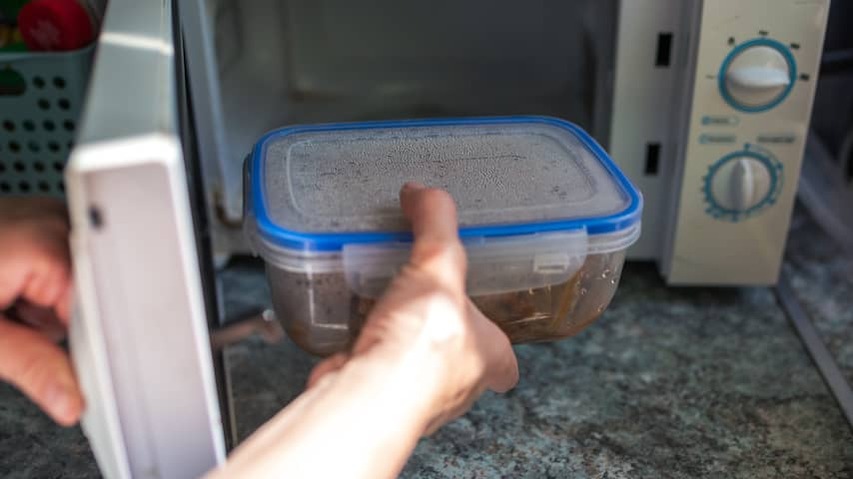
Are you cooking ahead to take to the office, or are there leftovers? Plastic containers come in handy then. Or should you be careful with them? NU.nl readers wondered how harmful it is to your health to store and heat food in plastic.
Chances are you sometimes use plastic containers to store food. But what if you put your container with pasta and all in the microwave to heat it up? It is possible that you are ingesting microplastics as a result. Toxicologist Emma Kasteel from Utrecht University tells NU.nl that all types of plastic release microplastics.
Kasteel researches the health effects of micro- and nanoplastics. Nanoplastics are even smaller plastic particles than microplastics. These small plastic particles are everywhere: in the air, water, and soil. They enter our bodies when we breathe them in or when they end up on our plate.
How quickly that happens depends on how you use plastic containers. “We see that putting such a container in the microwave causes microparticles to be released faster,” she says. That can be harmful to your health. It is still unclear exactly how that works. In any case, more and more research is being done into it.
It is important to distinguish between these microplastics and the release of chemical substances. The more often you use a container and, for example, put it in the microwave, the faster microplastics are released. At the same time, heating a plastic container causes chemical substances from the plastic to leach into your food, especially if the container is not really intended for that purpose.
These containers are better to be heated
A spokesperson for the RIVM explains how this works per container and what you can pay attention to. For example, she says that you should not heat containers made of melamine plastic. “If you repeatedly heat food above 70 degrees in such a container, the chance increases that melamine in the form of a chemical substance will end up in your food.” If you ingest too much of this, it can lead to stones in the kidneys and urinary tract.
You should also be careful with plastic made of polycarbonate. With repeated use at high temperatures, that stuff can release bisphenol A and thus end up in your food. It is a chemical substance that is in some plastic products. This substance can be harmful to your fertility and cause allergic skin reactions and irritation to the airways.
However, this is not the case with all types of polycarbonate. “A test with hot coffee in different brands of polycarbonate mugs showed that some mugs did release bisphenol A and others did not,” says the RIVM spokesperson. “So quality also matters, even within one type of plastic.”
This is how you can see in the store what child of plastic something is made of
Check the plastic identification code on the packaging to see what type of plastic a product is made of. This code is a triangle of arrows with the numbers 1 to 7. The number indicates what type of plastic it is. You can pay attention to this:
Here you will find a complete list of all plastic identification codes.
Do not use the same containers for Too Long
Most plastic containers are made of polypropylene, that material is more resistant to higher temperatures. These high-quality containers, labeled ‘microwave-safe’, can therefore be used to heat food in. Yet the spokesperson also points to risks here: when heated in the microwave, antioxidants in the material can be broken down. That can mean that the degradation product di-tert-butylphenol ends up in your food. Prolonged exposure can cause damage to your organs.
Do not forget that the more often you put a container in the microwave, the faster the plastic ages and no longer meets the quality requirements. When that happens, it is important to replace the container. And don’t worry: plastic that is sold is carefully checked first. “A manufacturer must be able to demonstrate that a product is safe under normal use,” said the spokesperson.
These Materials are Better
It is important to only use the product as indicated. So check carefully whether your containers are suitable for the microwave. Good to know: the transfer of substances from plastic to the food on your plate is greatest at high temperatures, contact with fatty or acidic food, or if the plastic remains warm for a longer period of time. If you want to be on the safe side and avoid plastic altogether, glass or heat-resistant ceramics are recommended.
“Also, covering your food with cling film while heating is best avoided,” says the RIVM spokesperson. “Because the hot condensation then drips back into your food. If you want to store leftovers in a plastic container, wait until the food has cooled down properly before filling it. Store ‘fatty’ food such as snacks, sauces or meat in a glass container, so it can go straight into the microwave without transferring.”